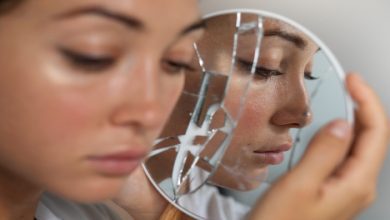By Dr Leow Aik Ming
A youthful brow at rest is positioned above the orbital rim, with a gradual arch laterally, and the lateral end or ‘tail’ of the brow located higher than the medial end. As one ages, it is common for the brow to assume a flat or horizontal position. If a sagging brow inhibits your facial expression, a brow lift is a time-tested method for rejuvenating the upper third of your face.
A brow lift or forehead lift reverses the effects of gravity and tightens the soft tissues of the forehead to restore a more youthful contour to your forehead skin, upper eyelids and eyebrows. Common reasons for a brow lift include: (1) drooping or lower eyebrow position that creates a tired, sad or grumpy appearance, (2) presence of deep horizontal creases across the forehead, (3) prominent frown lines or furrows between the eyebrows or across the top of your nose resulting in angry expression and (4) excess skin or fatty tissue hanging over the eyes resulting in difficulties in applying makeup for upper eyelid which is commonly seen in females.
Brow lift procedures have evolved from open techniques to more complex short incision or endoscopic techniques. A brow lift usually involves incisions in the hair-bearing scalp, but sometimes incisions are made in the forehead and/or the upper eyelids. The selection of brow lift is based on the facial features and aesthetic preferences. The aesthetic goal is to achieve the most beautiful and natural-looking results, as well as to make the recovery as easy and comfortable as possible.
Various types of brow lift procedures:
Open (coronal) technique: The incision is across the top of the scalp, beginning above the ears and hidden within the hair.
Short or Limited incision technique: The incisions are hidden in the temporal hairline (temples). If the brow lift is done in conjunction with an upper blepharoplasty, upper eyelid incisions will be used to complete the brow lift by treating ‘frown’ lines between the eyebrows and raising the inside part of the eyebrows.
Endoscopic brow lift: The incisions may include three short incisions along the top of the scalp and a temple incision on each side. These incisions will be totally hidden within the hair.


Postoperative expectations
After the surgery, compressive dressing may be applied to the forehead to minimize swelling and bruising. If tubes are inserted to drain out fluid or blood from the operative field, they will be removed on first or second day after the surgery. During the first 1-2 weeks after the surgery, patient may experience swelling, numbness, discomfort, bruises and discoloration around the forehead and periorbital regions. During the healing phase, patient may also experience itchiness on the forehead or scalp for a period of time. These symptoms mentioned are usually transient and will disappear with time. Oral antibiotics and analgesics will be prescribed to reduce the risk of infection and post-operative pain respectively. The stitches will be removed 7-10 days after the surgery.
Postoperative care
- Follow the postoperative instructions given carefully.
- Head elevation especially when sleeping for 1-2 weeks.
- Take the prescribed medications as instructed.
- Compressive bandage or garment over the forehead may be necessary for 3-5 days after the surgery.
- Ice compression on the forehead for 3-5 days.
- Regular wound cleaning with antiseptic solution and antibiotic ointment.
- Allow gentle hair washing from second day post surgery.
- Avoid strenuous physical activities for 3-4 weeks.
- Make up to cover the bruises and discoloration may be allowed from third day post surgery.
- Regular use of sunscreen for 3-6 months after the surgery.


